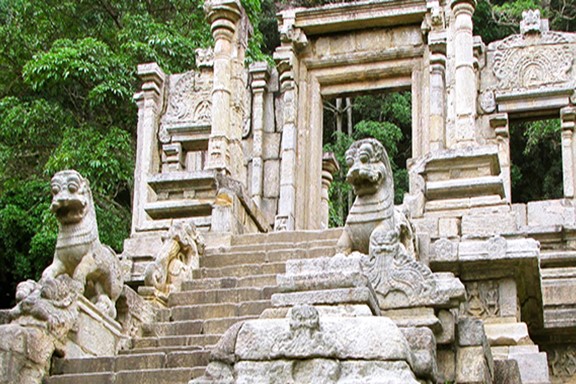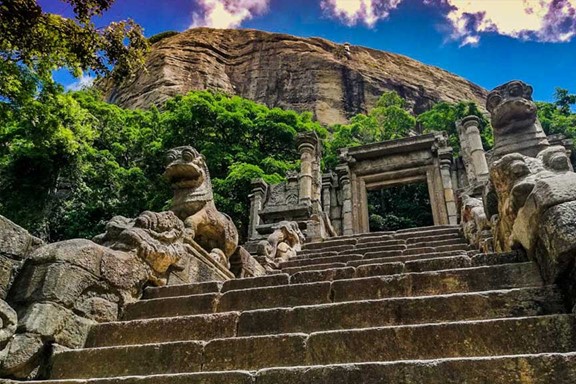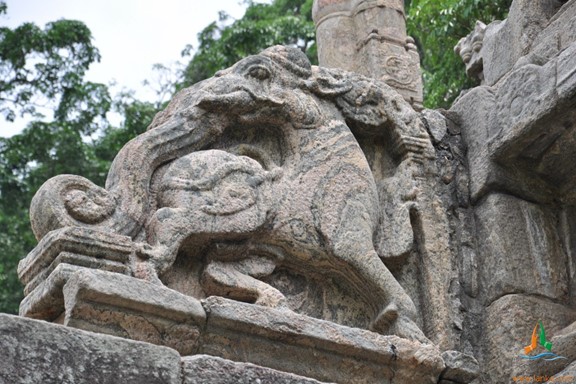Discover the Ancient Citadel: Exploring Yapahuwa in Sri Lanka
Welcome to Yapahuwa, a fascinating ancient fortress that offers a glimpse into Sri Lanka’s rich history and architectural grandeur. Nestled in the North Western Province, Yapahuwa served as the island’s capital in the late 13th century. This historical treasure, less frequented by tourists, provides an intriguing and serene exploration for history enthusiasts and adventure seekers alike.
Marvel at the Magnificent Staircase
The most striking feature of Yapahuwa is its grand stone staircase, which leads to the summit of the rock fortress. Adorned with intricate carvings of lions, elephants, and mythical creatures, the staircase is a testament to the artistic prowess of ancient Sri Lankan craftsmen. As you ascend the steps, take in the impressive details and imagine the fortress in its full glory during its heyday.
Explore the Ancient Palace and Temple Ruins
At the summit, discover the ruins of the royal palace and the temple that once enshrined the Sacred Tooth Relic of Buddha. The palace ruins, though weathered by time, still reflect the architectural brilliance of the period. The temple, known for its exquisite stone carvings and statues, offers a glimpse into the spiritual and cultural significance of Yapahuwa as a former capital.
Enjoy Panoramic Views
Climbing to the top of the rock fortress rewards you with breathtaking panoramic views of the surrounding countryside. The lush green landscapes, dotted with paddy fields and distant hills, create a picturesque backdrop. The vantage point offers a serene escape and a perfect spot for photography enthusiasts to capture the beauty of the region.
Learn About the Historical Significance
Yapahuwa holds a unique place in Sri Lanka’s history. Established by King Buvanekabahu I in the late 13th century, it was strategically built to protect the Sacred Tooth Relic from invaders. Although its prominence as a capital was brief, the site remains an important archaeological and historical landmark. Local guides are available to share intriguing stories and historical insights, enhancing your understanding of Yapahuwa’s past.
Practical Information:
Location and Accessibility: Yapahuwa is located approximately 130 kilometers northeast of Colombo and about 50 kilometers north of Kurunegala. The site is accessible by road, with private vehicles, taxis, and buses being the most common modes of transportation. Guided tours from major cities can also be arranged, offering convenient travel and expert insights.
Site Hours and Entry: Yapahuwa is open to visitors from 8:00 AM to 5:00 PM daily. Visitors are advised to dress modestly, respecting the cultural and historical significance of the site. There is a nominal entry fee, which supports the preservation and maintenance of the ruins.
What to Wear and Bring: Wear comfortable, modest clothing suitable for climbing and exploring ancient ruins. Sturdy walking shoes are essential for navigating the rocky terrain. Bring plenty of water, sunscreen, a hat, and insect repellent to ensure a comfortable visit.
Best Time to Visit:
The best time to visit Yapahuwa is during the dry season, from May to September, when the weather is favorable for outdoor exploration. Early mornings and late afternoons are ideal for visiting to avoid the midday heat and enjoy the tranquil ambiance.















